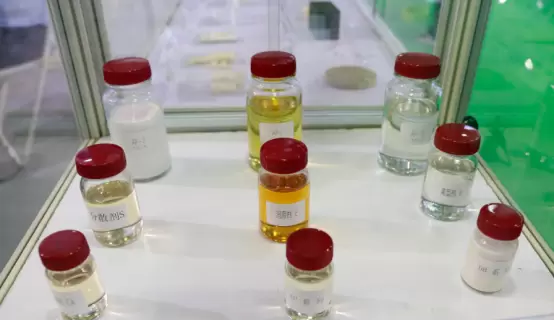Dispersion agents, also known as diluents or deflocculants, are a type of ceramic additive crucial in the wet forming process of high-performance ceramics. These agents ensure the ceramic slurry maintains high solid content, stability, and good rheological properties, facilitating the formation of ceramics with complex shapes, minimal shrinkage upon firing, uniform volume density, and stable performance. Dispersion agents aid in controlling the flow properties of the slurry.

Dispersion agents vary widely, classifiable into water-based and oil-based (non-aqueous medium) agents, with the former further divided into ionic (including cationic and anionic), nonionic, and mixed types.
Inorganic Dispersion Agents: Commonly used inorganic agents include sodium phosphate, sodium silicate, sodium carbonate, and sodium metasilicate. Their dispersing mechanism primarily involves electrostatic effects, where they ionize in water, thickening the double layer and enhancing particle repulsion to improve fluidity. Despite their broad application in traditional and sanitary ceramics due to low cost, their narrow deflocculation range, poor stability, and impurity introduction limit their use.
Organic Dispersion Agents: These agents work through electrostatic and steric hindrance to prevent particle agglomeration. Typically organic electrolytes, they adsorb onto particle surfaces, enhancing electrostatic repulsion. Organic small molecule dispersion agents, like sodium citrate and sodium humate, offer better performance than inorganic agents but are sensitive to pH and temperature and are relatively costly.
Polymeric Dispersion Agents: Also known as superdispersants, they are either polymeric polyelectrolytes or nonionic types. Their molecular structure and molecular weight are adjustable, providing better stabilization and flow than inorganic and small molecule organic dispersants. Water-soluble polymers like sodium polyacrylate and polyacrylamide are commonly used, with their molecules adsorbing to particles and dispersing them in water by breaking down clay's card-house structure, significantly outperforming traditional dispersants.
Dispersion agents prevent agglomeration in the slurry by interacting with ceramic particle surfaces, categorized into electrostatic repulsion, steric hindrance, and electrosteric stabilization. These mechanisms involve ionized dispersion agents forming charged barriers or polymers adsorbing to surfaces and extending in the medium, creating layers that prevent particle flocculation.
In ceramic slurry preparation, dispersion agents facilitate grinding, dilution, and stable dispersion by reducing viscosity and improving flowability. They prevent particle agglomeration, improve grinding efficiency, and enhance the uniformity and sphericity of the slurry particles. Additionally, they can bind particles or increase the strength of the green body, playing a significant role in improving ceramic product performance and reducing production costs.
Not all dispersion agents are suitable for every ceramic material, necessitating experiments to determine the best agent for a given material. This involves analyzing the viscosity, sedimentation, zeta potential, and pH value of the slurry with different dispersion agents. The development of new dispersion agents can follow two paths: combining existing industrial agents for improved performance and cost reduction, or chemically synthesizing new agents based on theoretical research, particularly focusing on organic polymers and polyelectrolytes for special ceramics or oxide ceramics, significantly enhancing slurry solid content and rheological properties.
Sanxin New Materials Co., Ltd. specializes in high-quality ceramic milling balls, nanoparticles, and nanopowders tailored for advanced applications. Our product range also includes top-tier wear-resistant and abrasion-resistant ceramics, designed for durability and performance. Discover our solutions for enhancing your industrial processes with cutting-edge ceramic materials.
For more advices and knowledge about Grinding Balls, Sand Millls, please contact with our sales:
Charls Shaw
Sales Manager |Sanxin New Materials
Mobile:+86 19070858212(WhatsApp)
Email:sales@beadszirconia.com
Website:https://www.beadszirconia.com

Submit your demand,
we will contact you ASAP.

Sanxin New Materials Co., Ltd. focus on producing and selling ceramic beads and parts such as grinding media, blasting beads, bearing ball, structure part, ceramic wear-resistant liners, Nanoparticles Nano Powder

